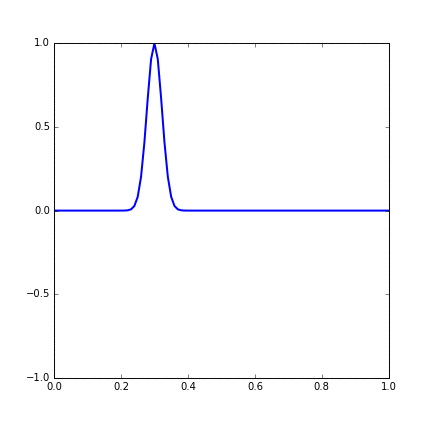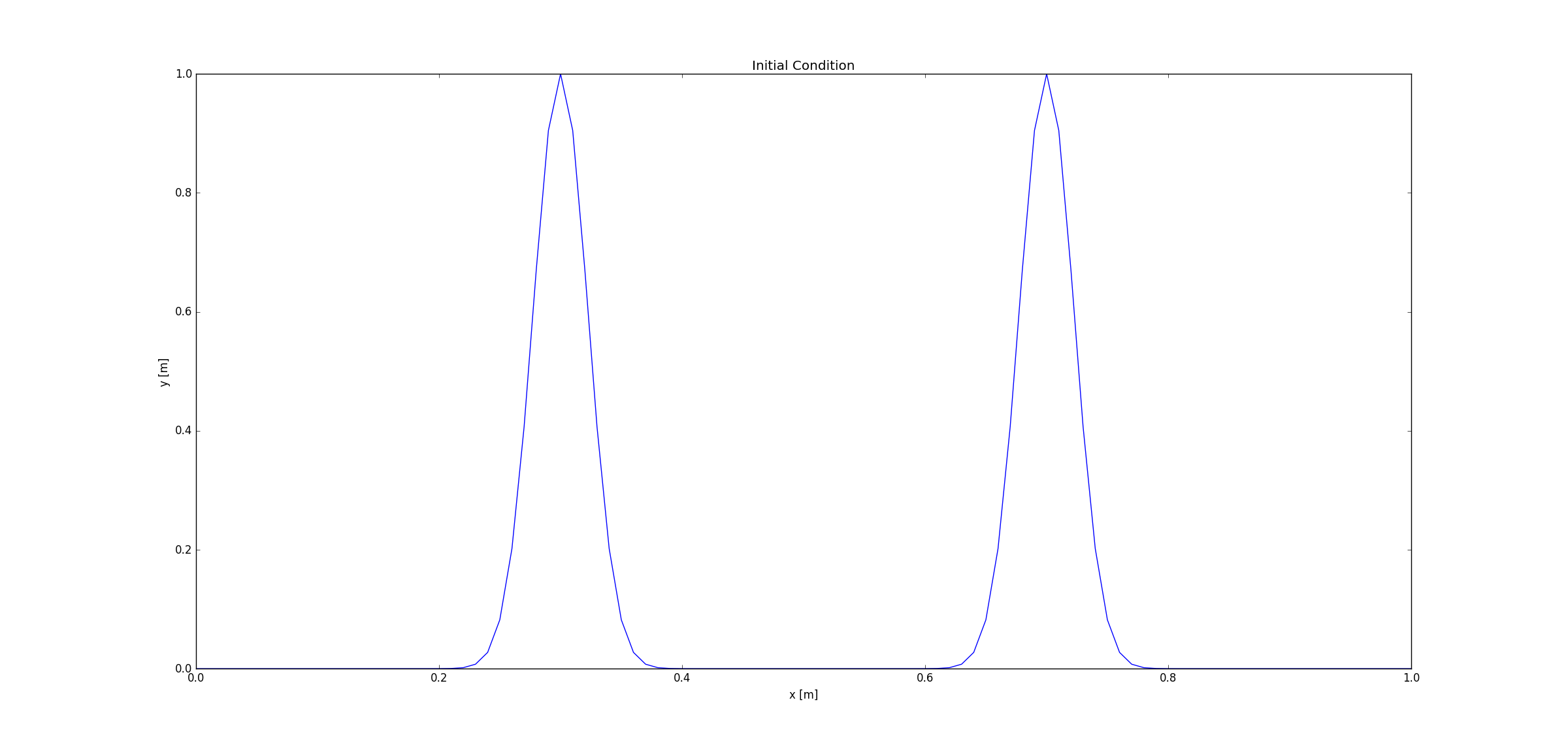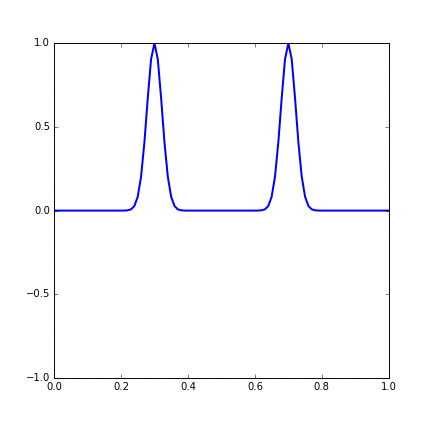王世兴
2013301020050
Problem 6.6
An important feature of a linear equation is that the sum of two solutions is also a solution. One consequense of this is that two wavepackets will travel independently of each other. An especially clear way of demonstrate this is to set up a string with an initial profile such that there are two Gaussian wavepackets located at different places on the string. These wavepackets (or components of them) may then propagate toward each other and collide. Show that these wavepackets are unaffected by these collisions. That is, show that two such wavepackets pass through each other without changing shape or speed.
Wave propagating along a string is an interesting question involving the time evolution of a dynamical system. The liearity is confirmed in the program that two Gaussian waves propagates independently with their speed and shape unruffled.
In mathematics, a linear map or linear function f(x) is a function that satisfies the following two properties:
Additivity: f(x + y) = f(x) + f(y).
Homogeneity of degree 1: f(αx) = αf(x) for all α.
The homogeneity and additivity properties together are called the superposition principle. It can be shown that additivity implies homogeneity in all cases where α is rational; this is done by proving the case where α is a natural number by mathematical induction and then extending the result to arbitrary rational numbers. If f is assumed to be continuous as well, then this can be extended to show homogeneity for any real number α, using the fact that rationals form a dense subset of the reals.
In physics, a wave packet (or wave train) is a short "burst" or "envelope" of localized wave action that travels as a unit. A wave packet can be analyzed into, or can be synthesized from, an infinite set of component sinusoidal waves of different wavenumbers, with phases and amplitudes such that they interfere constructively only over a small region of space, and destructively elsewhere.[1] Each component wave function, and hence the wave packet, are solutions of a wave equation. Depending on the wave equation, the wave packet's profile may remain constant (no dispersion, see figure) or it may change (dispersion) while propagating.
The dynamic function of the string with ends fixed is
numpy is a Python package famous for scientific computation. It provides a fine data strcture numpy.ndarray together with costomized functions simplifying computations. For example, we need a discrete exponential function, with math package, we need a list and use for cycle to change the value of each element of the list. While in numpy, things are much easier.
self.X=np.linspace(0,length,self.i,endpoint=True)
self.Y0=np.exp(-k*(self.X-x0)**2)
Gaussian equations are chosen as the initial condition, that is,
In the program we used the fixed boundary condition
The best way to show the result of the code is to save as the .gif figure. But matplotlib does not offer convenient gif figure saving, so we need to download and install ImageMagick. Some tutorials are given below.
利用Matplotlib和ImageMagick制作gif动画
使用Matplotlib和Imagemagick实现算法可视化与GIF导出
First we use a initial condition that a Gaussian function on the string with its peak at 0.3 m form the left end of the string.

Figure 14.1 Dynamic figure of single Gaussian initial function.
Then to test the conditions required by the question by adding another Gaussian function with its peak at 0.7m. The initial condition is shown below.

Figure 14.2 Initial condition of two Gaussian functions.
And the development of the system with time is shown in the gif. We can see that two wavepackets pass through each other without changing shape or speed.

Figure 14.3 Time evolution of a string with two Gaussian wave initial condition.
-
Linearity. (2016, May 11). In Wikipedia, The Free Encyclopedia. Retrieved 10:35, May 31, 2016, from https://en.wikipedia.org/w/index.php?title=Linearity&oldid=719783892
-
Wave packet. (2016, April 13). In Wikipedia, The Free Encyclopedia. Retrieved 10:18, May 31, 2016, from https://en.wikipedia.org/w/index.php?title=Wave_packet&oldid=715077854
感谢陈锋同学的ImageMagick运行环境得到的动态图